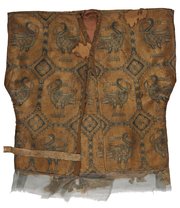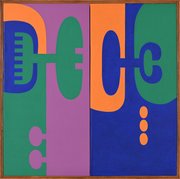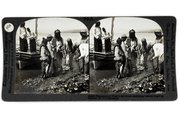
Door
Museum of Islamic Art
- Title:
- Door
- Production place:
- Iran
- Date:
- 1400 - 1600
- Period:
- Timurid
- Title:
- Door
- Production place:
- Iran
- Date:
- 1400 - 1600
- Period:
- Timurid
- Material:
- Wood, Paint
- Technique:
- Carving, Assembling, Painting
- Dimensions:
- 183.5 × 99.5 × 4 cm
This door is composed of two panels and is decorated with geometric motifs including six-pointed stars and polygons, with floral and interlaced vegetal motifs on the borders. The upper part bears a calligraphic inscription that reads Allah mufattih al-abwab wa-l-tawfiq li-llah (‘God opens the doors and success comes from Allah’), which provides a metaphoric meaning to the door itself as a symbolic access to God’s protection. Such doors would in fact be placed at the entrance of mosques or mausoleums in Iran, in the 9th and early 10th century AH/ 15th and early 16th century CE, as attested by two similar and dated examples in the Aga Khan Museum of Art (AKM707) and the Walters Art Museum (61.297). Woodwork carving using the tongue-and-groove technique is typical of Timurid craftsmanship. The floral designs recall artworks of the Ilkhanid period as well as the influence of Chinese lacquer work. Traces of polychrome pigments indicate that the original doors would have been completely painted.



